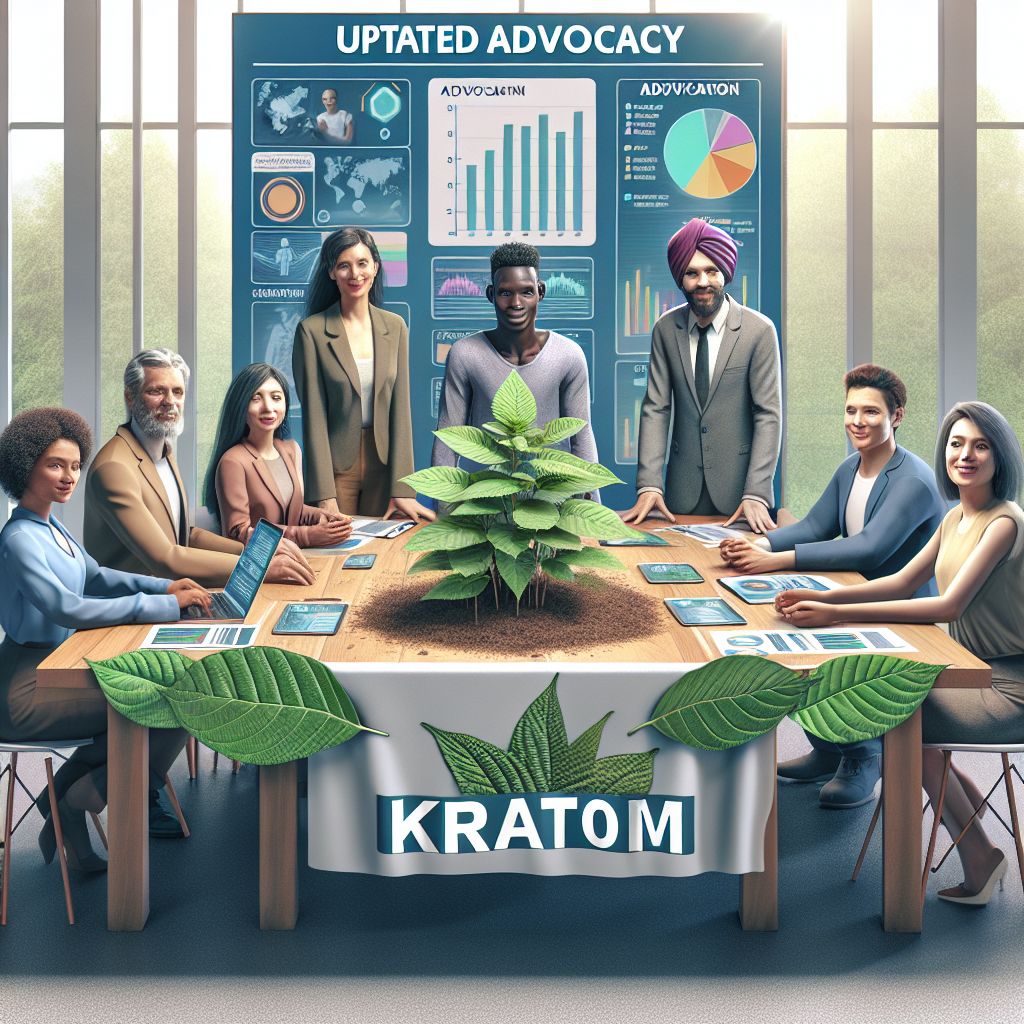
Kratom Advocacy Updates: Essential Insights for Supporters
- Understanding Kratom: A Comprehensive Introduction
- History of Kratom Usage
- The Current Legal Landscape
- Table of State Legal Status of Kratom
- Advocacy Groups and Their Roles
- The Health Benefits of Kratom
- Risks and Side Effects
- The Importance of Quality Control
- Navigating the Research Landscape
- The Role of Education in Advocacy
- Building a Supportive Community
- Frequently Asked Questions
- 1. Is Kratom safe to use?
- 2. Can Kratom help with opioid withdrawal?
- 3. What are common side effects of Kratom?
- 4. How do I ensure I buy quality Kratom?
- 5. Is Kratom legal everywhere?
- 6. Are there any interactions with medications?
- 7. How does Kratom work?
- 8. Where can I learn more about Kratom advocacy?
- 9. Is research on Kratom ongoing?
- 10. How can I get involved in Kratom advocacy?
- References
Understanding Kratom: A Comprehensive Introduction

Kratom, also known as Mitragyna speciosa, is a tropical tree native to Southeast Asia. Its leaves have been used for centuries for their psychoactive properties. Traditionally, people in countries like Thailand and Malaysia chewed the leaves for energy and pain relief. In recent years, Kratom has gained popularity in the United States as a natural alternative for various conditions, including chronic pain, anxiety, and opioid withdrawal.
The leaves contain compounds such as mitragynine and 7-hydroxymitragynine, both of which interact with the body’s opioid receptors. This unique interaction is what makes Kratom both intriguing and controversial. Enthusiasts praise its potential benefits, while critics warn of its risks. Understanding the current landscape of Kratom advocacy can help supporters navigate its complexities and advocate responsibly.
History of Kratom Usage
The history of Kratom is rich and varied. For centuries, the plant has played a significant role in the cultural and medicinal practices of Southeast Asia. In Thailand, laborers would consume Kratom leaves to combat fatigue and boost productivity. In Malaysia, traditional healers used it to treat a range of ailments.
Shifts in public perception have occurred over time. While some communities embraced Kratom for its natural healing properties, others have viewed it with suspicion, primarily due to its psychoactive effects. As it gained traction worldwide, particularly in the U.S., Kratom found itself at the center of debates around herbal remedies versus controlled substances.
The Current Legal Landscape
As of now, the legality of Kratom varies significantly across regions. In some states, Kratom remains legal, while others have enacted bans. States such as Utah and Arizona openly support its use, while states like Alabama and Vermont have outlawed it. Local advocacy groups work tirelessly to keep supporters informed about legislative changes.
Federal oversight adds another layer of complexity. The Drug Enforcement Administration (DEA) has considered classifying Kratom as a Schedule I substance, which would classify it alongside drugs like heroin. While this has not yet happened, the possibility leaves many advocates on high alert.
Table of State Legal Status of Kratom
| State | Legal Status |
|————|—————-|
| California | Legal |
| Florida | Legal |
| New York | Legal |
| Alabama | Banned |
| Vermont | Banned |
| Arizona | Legal |
Advocacy Groups and Their Roles
Various organizations advocate for Kratom users and educate the public about its benefits. Prominent groups like the American Kratom Association (AKA) play a pivotal role in lobbying for regulation instead of prohibition. Such organizations often provide resources for both consumers and legislators. They aim to ensure responsible use through education and safety standards.
Additionally, advocacy groups work to gather data on Kratom’s effects. By conducting studies and surveys, they present evidence to counter negative narratives. This data serves as vital ammunition in discussions with lawmakers and medical professionals.
The Health Benefits of Kratom
Supporters of Kratom often highlight its potential health benefits. Many users report relief from chronic pain conditions, such as arthritis or fibromyalgia. Others use it to manage anxiety and depression without relying on pharmaceutical drugs. Remarkably, some people find that Kratom assists with opioid withdrawal symptoms.
While anecdotal evidence is abundant, clinical research is still in its infancy. However, several studies have shown promising results. Many researchers are keen to explore how Kratom can fit into modern medical practices.
Risks and Side Effects
Despite its potential benefits, Kratom is not without risks. Some users have experienced adverse effects, such as nausea, constipation, and dizziness. In extreme cases, high doses can lead to more severe issues, including respiratory depression.
Moreover, dependency can develop with regular use. While some people might use Kratom occasionally for relief, others may find themselves reliant on it. Therefore, moderation and responsible use are critical when considering Kratom.
The Importance of Quality Control
Quality control emerges as a crucial topic within the Kratom community. Not all Kratom is created equal. Some products may be contaminated with harmful substances, while others may not contain the claimed active ingredients. Consequently, it’s vital for consumers to purchase Kratom from reputable sources.
Third-party testing and transparency in sourcing are essential. Supporters should seek vendors who openly share lab results. This adds a layer of trust and safety, ensuring users know what they are consuming.
Navigating the Research Landscape
The scientific community is actively examining Kratom’s effects. Various studies focus on its compounds and their potential uses in pain management and addiction therapy. However, gaps in research still exist.
Conducting rigorous and unbiased research is imperative. As more data becomes available, it can help shape public perception and inform policies. Advocacy groups often partner with researchers to facilitate studies, ensuring they meet ethical standards while remaining focused on essential questions.
The Role of Education in Advocacy
Education plays a vital role in Kratom advocacy. Misinformation can spread quickly, especially in the age of social media. Thus, advocates emphasize the need for accurate and reliable information. Workshops, webinars, and community forums serve as platforms for sharing knowledge.
Equipping consumers with facts empowers them to make informed choices. Furthermore, educating lawmakers about Kratom can help clarify its benefits and risks. As supporters foster understanding, they contribute to more nuanced conversations around this complex plant.
Building a Supportive Community
Finally, building a supportive community is key for Kratom advocates. Networking with others can provide emotional support and shared experiences. Online forums, local meetups, and social media groups offer spaces where people can connect and learn.
These platforms can be powerful for amplifying voices advocating for Kratom. They allow users to share testimonials, experiences, and resources. A cohesive, informed community can significantly impact how Kratom is perceived and regulated.
Frequently Asked Questions
1. Is Kratom safe to use?
While many users report benefits, Kratom can have side effects, and dependency is possible. Always consult a healthcare provider before use.
2. Can Kratom help with opioid withdrawal?
Some users claim Kratom helps alleviate withdrawal symptoms, but more research is needed to confirm its effectiveness.
3. What are common side effects of Kratom?
Common side effects include nausea, dizziness, and constipation. Higher doses may lead to more severe reactions.
4. How do I ensure I buy quality Kratom?
Look for vendors that provide third-party lab testing and transparent sourcing practices.
5. Is Kratom legal everywhere?
No, Kratom’s legality varies by state. It’s essential to check local laws before purchasing or using it.
6. Are there any interactions with medications?
Yes, Kratom can interact with various drugs. Always consult a healthcare provider for guidance.
7. How does Kratom work?
Kratom interacts with opioid receptors in the brain, providing potential pain relief and mood enhancement.
8. Where can I learn more about Kratom advocacy?
Organizations like the American Kratom Association offer resources, educational materials, and updates on legislation.
9. Is research on Kratom ongoing?
Yes, many researchers are currently studying Kratom’s effects, risks, and benefits.
10. How can I get involved in Kratom advocacy?
You can participate in local groups, share knowledge online, and support advocacy organizations pushing for responsible regulation.
References
– American Kratom Association
– Kratom Research
– Kratom Legal Status
– WebMD – Kratom Overview
Engaging in the discourse surrounding Kratom is crucial for supporters. Awareness, education, and community building can help shape its future positively.


